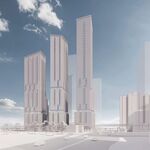TheTigerMaster
Superstar
If it's good enough for the tony residents of Rosedale then why can't it be for the people of Scarborough?
Also, it's true that the Vancouver SkyTrain capacity is lower but that strictly due to the size of the stations. Build even 100 meter stations and you have a very high capacity system. The new MK111 are gorgeous and completely articulated like the new subway trains. They can run at frequency of up to every 80 seconds. To put that into perspective, a 95 meter station is the equivalent of running 9 MK1 cars every 80 seconds.
From what I've heard, the Vancouver sky train design is a disaster. Capacity is way too low thanks to the tiny (tiny!) stations they designed. Guess this is what happens when you trust profit driven private corporations with the design of public transit. Thankfully Toronto has had the foresight to design all lines long platform sizes.








